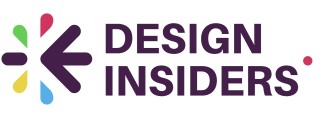
Understanding Market Segmentation
Exploring the Foundations of Market Segmentation
Market segmentation serves as the cornerstone for any successful design strategy by grouping potential customers based on specific criteria such as demographics, psychographics, geography, and behavior. Knowing how to effectively segment your audience allows businesses to tailor their products, services, and marketing efforts to meet the specific needs and preferences of each segment more efficiently.One of the key aspects of market segmentation is understanding the diverse types of market segments. These include demographic segmentation, which classifies customers based on age, income, education, and other quantifiable factors. Psychographic segmentation, on the other hand, dives deeper into the psychological traits, values, and lifestyles of consumers, helping to create a more personalized approach. Geographic segmentation focuses on the physical location of the customer, which might influence their purchasing behaviors. Lastly, behavioral segmentation analyzes the customer's past interactions with the product or brand, offering insights that can guide future decisions.
The information gleaned from market analysis is not only beneficial for improving current design strategies but also pivotal for planning future products and marketing campaigns. An adept understanding of market segmentation allows designers to align their creative outputs with what is known about specific audiences' behavioral patterns. This systemic approach enhances the ability of businesses to deliver targeted marketing strategies that resonate with each audience neatly.
Incorporating data-driven insights into the segmentation market gives brands an edge in creating products that surprise and delight their customers while maintaining relevance in rapidly changing markets. The role of understanding cognitive bias in advertising design may further enhance the depth of customer insights, presenting another layer of complexity and opportunity for businesses to leverage in their marketing segmentation strategies.
In summary, market segmentation is indispensable in comprehending the diverse dynamics of your target market, enabling more precise alignment between consumer needs and business offerings. This groundwork sets the stage for designing impactful marketing strategies that support a brand's objectives and goals in the marketplace.
Identifying Target Audiences
Pinpointing Your Ideal Audience
Identifying target audiences is a crucial step in the design process, as it allows businesses to tailor their products and marketing strategies to meet the specific needs and preferences of their customers. By understanding the different market segments, companies can create more effective marketing campaigns that resonate with their target market.
Market segmentation involves dividing a broad market into smaller, more manageable segments based on various criteria such as demographics, psychographics, geography, and behavior. This segmentation helps businesses focus their marketing efforts on the most promising segments, ensuring that their products and services are aligned with the expectations of their audience.
- Demographic Segmentation: This type of segmentation is based on variables such as age, gender, income, education, and occupation. By analyzing demographic data, businesses can identify which segments are most likely to be interested in their products.
- Psychographic Segmentation: This approach considers the lifestyle, values, and personality traits of customers. Understanding these factors can help businesses create products and marketing messages that appeal to the emotional and psychological needs of their audience.
- Geographic Segmentation: This involves segmenting the market based on location. Businesses can tailor their products and marketing strategies to suit the preferences of customers in specific regions.
- Behavioral Segmentation: This type of segmentation focuses on the purchasing behavior of customers, including their buying habits, usage rates, and brand loyalty. By analyzing behavioral data, businesses can identify patterns and trends that can inform their marketing strategies.
For example, a company that designs eco-friendly products might focus on customers who are environmentally conscious and prioritize sustainability. By targeting this specific segment, the company can develop marketing strategies that highlight the environmental benefits of their products, ultimately enhancing their brand image and customer loyalty.
Understanding your target audience is not just about identifying who they are, but also about understanding their needs and preferences. This knowledge can help businesses create products and marketing strategies that truly resonate with their audience, leading to increased customer satisfaction and loyalty. For more insights on how happy employees can lead to happier customers, you can explore this insightful article.
Enhancing Design Strategies
Refining Design Approaches with Segmentation Insights
As designers, tapping into the treasure trove of market segmentation can significantly enhance design strategies. Understanding the intricacies of various segments allows creatives to hone their approach, ensuring their designs resonate deeply with the intended audience, whether it's through visual aesthetics, functionality, or user experience.
Utilizing segmentation data enables a more targeted approach to designing products and services that align with specific customer preferences. For example, demographic segmentation provides insights into age, gender, income level, and education, helping tailor designs that appeal to these distinctive demographics. Psychographic segmentation, on the other hand, reveals information about customers’ lifestyle, interests, and values. Recognizing these patterns gives designers the ability to craft designs that forge emotional connections, aligning with the brand’s core values and the consumers’ identity.
Additionally, geographic segmentation aids businesses in understanding location-based preferences. For example, designs that cater to urban environments may differ from those preferred in rural settings. Behavioral segmentation is equally crucial, providing insights into purchasing habits and customer loyalty, allowing businesses to design products that are not only market-specific but also foster repeat engagement through enhancing user experience and satisfaction.
- Demographic insights for tailored aesthetics
- Psychographic insights for emotional and value alignment
- Geographic considerations for location-based preferences
- Behavioral aspects that influence user engagement
By leveraging market segmentation strategically, designers can craft compelling marketing strategies that resonate with the target audience, ensuring the brand's offerings are competitive and customer-centric. As understanding of customer segmentation continues to evolve, it opens exciting possibilities for more innovative design solutions that speak directly to the needs and desires of different market segments.
Case Studies in Design
Real-World Examples in Design Segmentation
Understanding how market segmentation can influence design is best illustrated through real-world examples. Various sectors have employed segmentation strategies to tailor their design approaches, aligning them with specific market segments.- Technology Industry: In the technology sector, companies often use demographic segmentation to identify different age groups and their preferences for gadgets. For instance, a brand launching new smartphones might develop marketing strategies focusing on young adults who are tech-savvy and constantly seeking innovations. The design of these products often emphasizes sleek aesthetics and advanced features, which appeal to this target audience.
- Fashion Industry: Geographic segmentation plays a crucial role, especially in fashion design. Designers create collections that cater to the climate, cultural preferences, and seasonal trends of a particular region. A successful campaign might tailor its designs based on data about local market preferences, influencing the choice of fabrics, colors, and styles to increase customer adoption.
- Automotive Sector: The automotive industry leverages psychographic segmentation to cater to consumers' lifestyle choices. Luxury car brands often develop their designs and marketing strategies based on segments that value status and exclusivity. This approach helps in crafting experiences that resonate deeply with a specific target market, consequently enhancing brand loyalty.
Challenges in Market Segmentation
Facing the Hurdles of Market Segmentation
Market segmentation is undeniably a cornerstone of effective design strategy and marketing efforts. However, it does not come without its challenges. One of the primary hurdles businesses encounter is acquiring and analyzing accurate data. Data serves as the lifeblood of segmenting markets and, when unreliable, can lead to targeting the wrong audience, thus misaligning marketing strategies. Various types of segmentation, such as demographic segmentation and psychographic segmentation, require comprehensive data collection. This process can be both time-consuming and costly, particularly for small businesses. Additionally, the collection of sensitive customer data must adhere to regulations such as GDPR, adding another layer of complexity to the task. Another challenge lies in determining the correct number of segments. Splitting a market into too many segments may disperse marketing efforts too thinly, reducing their effectiveness. Conversely, too few segments might overlook specific customer preferences, limiting the potential for personalized marketing strategies. Behavioral segmentation, often based on customer interactions and transactions, brings its own quandaries. Identifying patterns in customer behaviors requires advanced analysis tools and methodologies, which are not always accessible or affordable. Additionally, psychographic and geographic segmentation present the difficulty of predicting and adapting to changes over time. As markets evolve, so do customer preferences and behaviors. This demands ongoing market analysis and flexibility in marketing campaigns to stay aligned with the target audience's current needs. Finally, rallying internal teams around segmented marketing strategies can present a challenge. Ensuring that the broader team comprehends and supports segmentation initiatives necessitates clear communication and shared objectives to optimize brand alignment across all segments. In summary, while market segmentation offers significant benefits in tailoring products and services to target customers, it demands diligent data management, strategic thinking, and internal collaboration to overcome these hurdles.Future Trends in Design Segmentation
The Emerging Evolution in Market Segmentation
As the realm of design continues to evolve, so do the methodologies applied in market segmentation. Understanding these shifts is crucial for businesses aiming to stay relevant. Here are some notable trends shaping the future landscape of segmentation in design.
- Data-Driven Insights: With the advent of advanced data analytics, businesses can now delve deeper into understanding customer preferences and behaviors. This allows for more refined segmentation, tailoring products to specific markets with unprecedented accuracy. As we discussed earlier, data plays a pivotal role in identifying target audiences and enhancing design strategies.
- Personalized Marketing Campaigns: The rise of personalization in marketing strategies demands that segmentation goes beyond traditional demographics. Psychographic and behavioral segmentation offer insights into the mindset and actions of customers, enabling brands to create highly targeted marketing campaigns.
- Integration of AI and Machine Learning: Artificial Intelligence and Machine Learning technologies are revolutionizing how segments are identified and engaged. They offer real-time market analysis, enabling businesses to adapt their strategies promptly and efficiently based on dynamic market conditions.
- Customer-Centric Approaches: There's a shift towards designing products and services that resonate on a personal level with the target market. By understanding the holistic customer journey, businesses can create seamless experiences that foster brand loyalty.
- Innovative Segmentation Types: The concept of segmentation is expanding. Beyond geographical and demographic segmentation, psychographic aspects are becoming key. Brands now leverage detailed insights about lifestyles and values to create differentiated offerings.
The challenges outlined earlier in market segmentation efforts are indeed evident, yet with the right approach, businesses can navigate them successfully. As these trends continue to develop, staying informed and adaptable will be integral for achieving sustainable design and marketing success.














